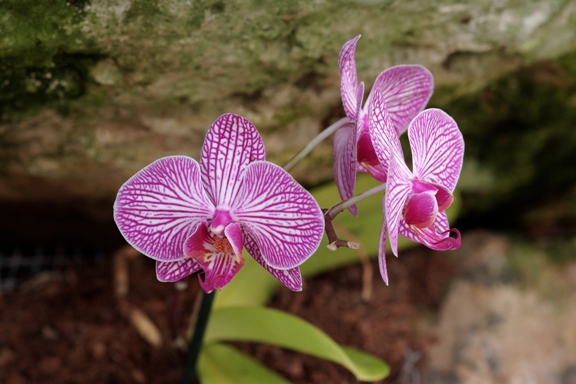
Orchids were considered greenhouse plants by many until recently when it was proven that a little care can make an orchid grow and flower in any natural home environment. These 7 orchid propagation techniques can be successfully used by hobby growers and professionals.
Division
Division is the simple process of splitting the plant into various parts with each division containing at least three back bulbs and one new growth to encourage flowering the following season. Division of the orchids is typically performed during the spring giving them time to transform into fully grown plants that are capable of flowering the next season.
Back Bulb Propagation
Back bulb propagation is promoting orchid reproduction from the flowered or unflowered back bulbs. The growth from this process may take two to three years to mature for blooming. The bulbs are placed in ideal conditions to promote the growth of the roots for orchid propagation.
Aerial Cuttings
Aerial cuttings can grow into new stock when Dendrobium orchids are placed under stressful conditions forcing them to reproduce shoots in lieu of flowering. The plants are repotted after they have almost grown into a fully grown plant before taking them from the parent plant.
Keiki
Keiki is the method of reproduction introduced in the Phalaenopsis orchids with the nodes around the flower spike made to grow into a small plant. Under normal circumstances, these nodes grow into a new branch, which through keiki is made to reproduce stock.
Tissue Culture
This method reproduces new stock when a new bud is placed under a controlled environment in a special nutrient-rich solution that can induce the cell growth. Tissue culture requires the presence of a sterile and clean environment to propagate orchids. It is a technique employed to create hybrid varieties of orchids for commercial purposes. Any attempt to promote orchid propagation through meristem tissue culture at home using flasks can take 3 to 5 years to get them to mature to flower.
Seeds
Orchid propagation using seeds is tough and requires a highly sterile environment. This technique using seeds requires great attention during the formative phase to sustain and survive.
De-Flasking Orchid Seedlings
This is a method that can be conducted at home with the assistance of supportive tools and materials like a rectangular plastic tray, flasks, razor blades, pressure cooker, distilled water, dish washing agent, household liquid bleach, agar-agar, etc. Temperature and lighting is also crucial in this technique. It should also be noted that orchid propagation involves complex procedures and special equipment to succeed.
Related Articles & Free Email Newsletter
Magnesium Supplementation for Orchids




Comment here